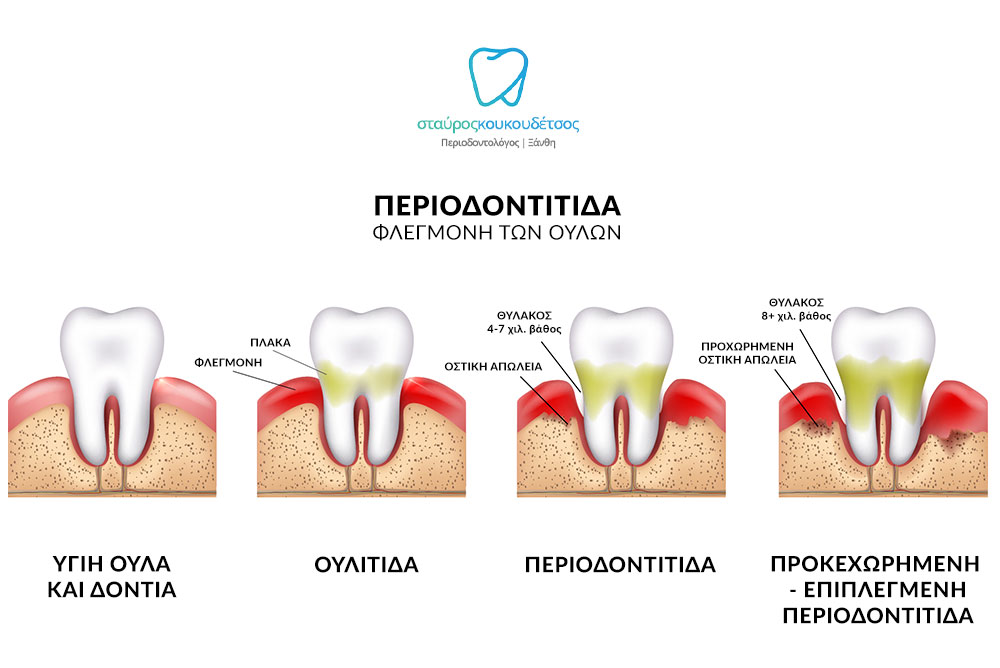Periodontitis

What is periodontitis?
Periodontitis is a serious gum infection, which damages both the soft tissue and the supporting bones of the teeth. It may cause increased tooth movement or even tooth loss. Periodontitis is common, but largely preventable and it can certainly be cured.
What causes periodontitis?
Most of the times periodontitis is the result of accumulated plaque on the teeth. Plaque can cause gingivitis, the mildest form of gum disease.
If the microbial plaque (or dental biofilm) stays on the teeth can harden under your gumline into tartar (calculus). Tartar is more difficult to be removed and its uneven surface allows extra bacteria to be retained. The longer plaque and tartar remain on your teeth, the more damage they can cause.
Plaque and tartar accumulation results in the detachment of gums from the teeth, when pockets are developing between your gums and teeth that fill with plaque, tartar and bacteria. Ongoing gum inflammation eventually causes periodontitis. If not treated, these deep infections will cause bone loss and you may lose one or more teeth. Additionally, continuous chronic inflammation can harm your immune system.
Treatment of periodontitis
The treatment of periodontitis can be performed by a dentist or a periodontologist. The goal of the treatment is to stop the inflammation and prevent further damage to the surrounding bone. A deep professional cleaning of the surface of the teeth and their roots from germs and tartar is needed.
Periodontitis is a multifaceted disease that depends on factors that do not change at all or are difficult to change (such as genetic predisposition, stress, hormonal disorders) and factors related to the patient’s habits (oral hygiene and smoking). So in order to have a successful treatment, it is necessary to adopt a good at-home oral care routine and, if you are a smoker, to stop smoking.
Nonsurgical Periodontal Therapy
Scaling and root planning is the process by which we remove plaque and tartar from the area around the teeth and under the gumline, as well as bacterial products that contribute to inflammation and delay healing. The procedure may be performed using an ultrasonic device, hand tools or special laser appliances.
Antibiotics may also be given, if necessary. Antibiotics can additionally help control bacterial infection and are either given systemically or applied topically to the pockets.
Surgical Periodontal Therapy
In advanced stages of periodontitis, where the previous nonsurgical therapy could not completely treat the outbreaks of the disease, dental surgery treatment may be required:
- Flap surgery (pocket reduction surgery). Your periodontist makes tiny incisions in your gum so as to succeed the deep cleaning of your teeth roots. After you heal, it’s easier to clean these areas and maintain healthy gum tissue.
- Guided tissue regeneration. This method allows, in addition to the better deep cleaning, the regrowth of bone that was destroyed by bacteria. Your dentist places a special piece of biocompatible fabric between existing bone and your tooth. The material prevents unwanted tissue from entering the healing area, allowing bone to grow back.
Regardless of the treatment applied, brushing of teeth twice a day, use of special interdental brushes and frequent visits to the dentist can significantly improve the results of the treatment and ensure its long-term maintenance.

